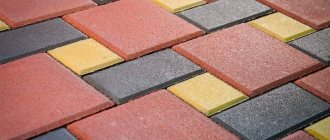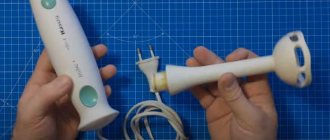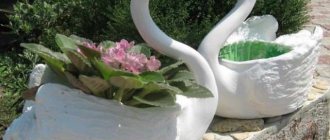How to make kinetic sand with your own hands at home: 3 simple recipes and instructions for production and storage.
Kinetic sand is sand that holds its shape and “sticks to itself,” but not to your hands. That is, the effect is similar to wet sand, but even better !
Many call it magic sand, although in fact this material has a different name. This is kinetic sand and is a product that has a similar texture to regular sand but can be shaped without wetting it.
The original sand - Kinetic Sand - is a very popular educational toy, but quite expensive. True, there are many budget analogues, but they usually have complaints about quality (Review of Kinetic Sand and its analogues in our article).
Therefore, it makes sense to try making kinetic sand with your own hands at home. Moreover, the recipe is very simple and affordable.
To implement any kinetic sand recipe with your own hands, you will need the main component - sand . It is very good if you buy sand for rodents at a pet store: very fine, clean and pleasant. But if you collect some sand in the nearest sandbox, first rinse it, sift it and bake it in a frying pan.
This modeling sand is an example of a non-Newtonian expander, or a fluid that increases its viscosity under pressure.
I wanted to find a recipe that had a similar texture to store-bought ones. So I chose completely different recipes and we tested them all.
What are the benefits of kinetic sand?
Kinetic sand is not only fun for children, but also a kind of therapy.
What are the benefits of kinetic sand:
- When a child is busy sculpting with sand, fine motor skills of the hands develop. And this contributes to faster speech development.
- Sand eliminates disorders and erases fear from consciousness.
- Playing with sand in a children's group develops basic communication skills, but even if the baby plays alone, he will be carried away and this will definitely benefit him.
- When a baby sculpts from sand, he develops creative perception.
- Playing with sand trains spatial thinking skills.
Playing with kinetic sand has a beneficial effect on the emotional state of children
- Thanks to regular manipulations with sand, the emotional state of children improves: negative emotions, irritability, aggression go away, tension and stress are relieved. Child psychologists widely use kinetic mass in their practice.
- Hobby makes the baby more diligent and concentrates his attention. This activity is recommended by psychologists for hyperactive, “squeezed”, shy children.
- While the child is playing in the sand, parents can go about their business and not worry about his safety.
- Kinetic sand has an unusual texture, so tactile perception develops during the sculpting process.
DIY kinetic sand options
When making kinetic sand at home, you need to decide on the components. You can make your own kinetic sand in a variety of ways.
For this use:
- Semolina.
- Regular sand.
Kinetic sand can be prepared from the simplest and most affordable products
- Starch.
- Colored quartz sand.
- Flour.
- Glue.
- Soda.
- Detergent.
- Oil.
- Boric acid.
- Shaving foam.
If you mix some components, you get an educational toy that is not inferior to classic kinetic sand.
What is kinetic sand made of?
We know what sand made at home consists of, because we made it with our own hands. Now you will find out what is hidden in the beautiful shopping boxes.
Real kinetic sand consists of quartz sand, it is 98%, and the remaining tiny 2% is a linear polymer. By the way, many of you eat this very polymer, because it is nothing more than E 900.
This sand is completely free of bacteria and never dries out.
From starch with sand
Sand and starch are the main components of this cooking option. It is advisable to give preference to corn starch, and buy purified sand, which can be found in pet stores.
What you need to prepare the modeling mass:
- 600 g sand;
- 400 g starch;
- 200 ml water.
Preparation:
- Mix the dry ingredients in a bowl using a plastic spatula until the consistency becomes homogeneous. Then add water a little at a time, stirring constantly.
- The mixture should be elastic and not very sticky. If there is not enough water, it is better to add it from a spray bottle so that lumps do not form.
- It is better to store the kinetic mixture in a container in the refrigerator, otherwise it will dry out and disappear. An important point is that starch can cause dry skin in children.
Recipe for kinetic sand with water
Use this Kinetic Sand recipe if you want to play with a texture as close to Kinetic Sand as possible and don't mind adding water as it dries.
The modeling sand for this recipe is most similar to the original, but dries out in two days. Just add water and you can play again!
It’s even surprising that this sand is very similar to kinetic sand, because there is no water in the original sand. And adding water to purchased kinetic sand will even ruin it.
Recipe:
- 2 cups sand (about 200 g in total),
- 1 tablespoon corn flour,
- 1 teaspoon dishwashing liquid,
- 1-2 glasses of water.
First mix all the dry ingredients, then all the liquid ones. Slowly add the foamy water mixture to the sand mixture and mix well. Carefully monitor the consistency of the mixture. The quality of the sand determines how much water you will need. We needed 1.5 glasses of water.
Store your homemade modeling sand in an airtight container. Then it can be used again and again. If the mixture dries out, add a little foamy water and stir.
From starch on water without sand
You can make your own kinetic sand from just starch and water without adding sand.
For this you will need:
- starch – 400 g;
- 200 ml water;
- any dye of your choice.
Preparation:
- Dissolve the paint in water and add starch little by little. To avoid lumps, mix everything well.
- Kinetic sand without adding sand is ready. Store the mixture in the refrigerator. If the mixture begins to harden, add a small amount of water.
From semolina
There are two ways to prepare a kinetic mixture of semolina.
The following components are used for this:
- Semolina + colored crayons.
- Semolina + vodka.
For the first preparation you will need the following ingredients:
- crayons of different colors;
- semolina.
Preparation:
- First, the crayons are ground into powder and semolina is added to the resulting dust. Mix everything well.
- This method of preparing kinetic sand is simple, but the sand is not very bright in color and free-flowing, unlike traditional kinetic sand. To achieve a brighter shade, it is better to use oil-based pastel crayons.
Components for the second option for preparing kinetic sand:
- semolina;
- vodka;
- dyes.
Preparation:
- It is very important to add vodka, not water. When you mix cereal with water, it becomes swollen and when it starts to dry out, a large lump is formed that is almost impossible to break. Since vodka evaporates very quickly, swelling of the cereal will not occur.
- The dye is diluted in vodka and semolina is added to the solution a little at a time. Mix everything well and place it on a board to dry the mixture.
- When the sand is dry, it is placed in containers. If the wet mass is stored in a container, there is a risk of mold forming in it.
What can be made from decorative sand?
The future author is not limited in the scope for creativity, because a variety of crafts can be created from the material. Some of them are almost elementary, others will require accuracy, attentiveness, and perseverance.
Creating pictures from stencils, frescoes
Now there is no shortage of goods: on the contrary, every year a large number of different new products appear. Therefore, sand stencils have been added to the usual coloring pictures on store shelves. They are sold in a set with colored sand. Pictures are images with an adhesive base applied to all areas. Frescoes differ from stencils in only one way: the former have frames around the picture, the latter have simple sheets.
The protective paper is removed from the elements of the picture one by one, sprinkled with decorative sand, and the excess is removed by shaking off. If you don’t have a stencil at hand, you can draw (print) a picture with a simple pencil, and use regular PVA glue to glue multi-colored material. In this case, each detail of the image is smeared very carefully, without going beyond its boundaries. The work is also done in stages.
To make three-dimensional paintings, they do things a little differently. The glue is applied in a very thick layer, then it is generously sprinkled with sand. First, the image is dried, the residue is shaken off or swept away with a wide brush. Those elements that want to be made more voluminous are lubricated again with terminals and again covered with decorative sand.
It is recommended to spray the completely dry painting with hairspray. This processing is needed not to fix grains of sand, but to give the finished image additional shine.
Gel candle
Coloring pictures and creating frescoes will appeal to the youngest creative people, but this application is not the only opportunity to decorate a house or an area near it. One of the easiest ways to use decorative sand is to make candles. For creativity you will need the following set of materials:
The candle gel is melted in a water bath. Add a couple of drops of flavoring to it. The wick is fixed in a decorative glass using a holder. Multi-colored sand and other decor are placed at the bottom of the vessel. Pour candle gel into the glass, holding the wick in the center, then allow the craft to harden.
Patterns in vases and florariums
Every housewife strives to ensure that her home does not look like a standard, faceless home. Small decorative items take an active part in creating an original interior. The simplest option is unusually shaped vases or large glasses in which multi-colored layers of sand are carefully placed.
It is not necessary to immediately go to the store and buy some original flowerpots, since the authors successfully use even familiar bottles, because it is the contents that change them beyond recognition - decorative sand poured through a funnel in layers (thick, thin, horizontally or at an angle).
Containers must be filled to the very neck, otherwise the composition may collapse. To create a pattern near the glass itself, small shelves are used to carefully make indentations. Sand of the desired shade is poured into these holes. Waves (dunes) are made with a spoon: with its help, sand is poured into slides. To prevent the lid from spoiling the appearance of the decor, it is hidden under a bright, festive fabric tied at the neck with contrasting ribbons (ribbons).
Florariums are more amazing compositions, since in addition to decorative sand, their design includes small stones, dry twigs, shells, stars and various (dwarf, ornamental) plants. Florariums are decorated with both fresh and artificial flowers.
A relative disadvantage of this type of creativity is the inability to reuse sand. Yes, you can try to select it, but sorting a motley pile of sand by color is not an easy task, so the operation will take a lot of Cinderella’s time.
Decoration of decorative objects
This is another answer to the question of what can be made from decorative sand. This exciting activity will appeal not only to children, but also to their parents. Why? Because this method makes it possible to transform familiar, somewhat boring objects: vases, glasses, as well as ceramics, mirrors, photo frames.
In this case, stencils are also used. First, they are used to distribute the glue, then the areas are covered in turn with decorative sand. After it dries, the excess is removed with a brush. Another potential option is to use double-sided tape.
What can be made from decorative sand? Almost everything that is usually done with paints, as well as various decorative elements, decorations of the local area and much more. This video will tell you how to create beautiful, bright material “out of nothing”:
Was this article helpful? We want to improve. Thanks for your opinion!
From starch with shaving foam
Do-it-yourself kinetic sand based on shaving foam is a little more expensive than other options.
Shaving gel will also work, but you need to turn it into lather first.
Needed for cooking:
- a glass of soda;
- 200 g starch;
- foam or shaving gel.
Preparation:
- Starch and shaving foam are added to the water in an amount that will allow the sand to hold its shape and not crumble.
- Mix everything well. To prevent the mixture from wasting, it is recommended to store it in a plastic box.
Which sand should you choose?
To choose a product to suit your taste, you don’t have to buy a sample of each brand to try; you can watch video reviews on the Internet or read reviews. All manufacturers try to meet the established criteria for kinetic sand, and after purchase, tactile sensations will tell you whether you like the product or not.
Some brands may disappoint: the mass can crumble like dry street sand, stick to your hands, and be difficult to remove from the surface. This is an acceptable error, because the pioneer has its own unique structure, which cannot be copied by other manufacturers without asking. Therefore, they have to develop their own technology, replacing the connecting component with a similar one.
On the other hand, a more affordable price from a domestic manufacturer can compensate for minor shortcomings in quality. It is important to realize that all manufacturers sell not fake Swedish sand, but analogues! Each product is unique, has its own trade name and meets all the requirements for children's products.
From starch with hair balm
A good consistency of the kinetic mixture can be achieved by using corn starch and hair conditioner (balm). Corn starch is not available in every home, so you can add rice or potato starch instead.
What you will need for preparation:
- 750 g starch;
- 100 g hair conditioner.
Preparation:
- Hair conditioner is added to the starch.
- It is added little by little and at the same time the modeling mass is kneaded using gloves.
The consistency of such sand should be viscous, but not sticky. A child can sculpt with such sand with his hands, and also use sand paskas.
From baking soda and detergent
This cooking option is very simple and affordable.
To prepare a kinetic mixture, you need:
- 200 g soda;
- 100 g baking powder;
- 100 g dishwashing detergent.
Preparation:
- First, mix soda and baking powder, then gradually pour in the detergent.
- The mixture is stirred until it becomes homogeneous. If the mixture is very wet, add baking powder.
The mass will be white and soft to the touch. Crafts made from it are fuzzy, so it is better to use Easter eggs or sand molds.
Made from colored quartz sand
Quartz sand is excellent for making kinetic mass. The main thing is to stock up on natural and pure ingredients that will not harm the baby’s health.
To prepare the first version of the kinetic mass you will need:
| Preparation:
|
The second option implies use of such materials:
| Preparation:
The child can sculpt it with his hands and also use molds. |
Option No4. Made from wheat flour and quartz sand
By adding flour, wonderful “smart” sand can be made without starch. Your child will really like the material obtained in this way, because it holds its shape well and is easy to work with.
You can make wonderful “smart” sand from flour
To prepare you will need:
- 3 parts flour;
- 6 parts quartz sand;
- 1.5 parts clean water.
Wheat flour
Step 1 . First, sift the flour and mix it with sand. Also take a second container and mix water and food coloring in it.
Step 2 . Add the coloring composition to the mixture of sand and flour, doing this in small portions. Mash well so that there are no lumps (you can do this with a fork).
Step 3 . It is recommended to divide the finished sand into several portions and then paint it in the required shades.
For coloring, you can put the resulting sand in different bowls and add a specific color to each of them.
Made from flour and butter
Do-it-yourself kinetic sand according to this recipe is ideal for modeling for small children. It's easy to knead without being too sticky.
What you need for cooking:
- 100 g flour;
- 100 ml water;
- 15 ml sunflower oil;
- 50 g salt;
- citric acid – 5 g.
Preparation:
- All components are mixed and poured into a ladle. The mixture is placed on low heat and stirred constantly. The heating time is approximately one minute - during this time the sand should harden.
- The resulting lump is thoroughly kneaded, divided into parts and a dye of the selected color is added. When you add fruit essential oils to the mixture, the mixture will acquire a pleasant smell.
Option No3. Made from silicate glue and boric alcohol
If you prefer this recipe, then first take care of the preparation:
- boric alcohol (4 teaspoons);
- sand for chinchillas (100 g);
- food coloring (1 teaspoon);
- silicate glue (2 teaspoons).
Excellent kinetic sand without starch can be obtained by adding silicate glue.
The ingredients are simple and can be found in every home. But the sand will turn out simply amazing! Don't believe me? Well, see for yourself.
Step 1 . Place boric alcohol in a small bowl, then add your chosen color dye and glue. Mix all ingredients thoroughly.
Stages of preparing kinetic sand from glue and boric alcohol
Step 2 . Add chinchilla sand to the resulting mixture. Why him? It is not only pure, but also has the required dispersion. Verified. Mix everything thoroughly and you can enjoy the unique properties of kinetic sand!
Mixing components and the final result
Made from flour without glue
There is an option for preparing kinetic mass without adding sand and glue.
Components:
- 100 g body butter;
- 800 g flour.
Preparation:
- The flour is placed in a bowl, after which oil is gradually poured into it.
- The mixture is stirred until it becomes homogeneous and soft.
This sand makes excellent figurines. If the mass turns out to be solid, add oil to it.
With boric acid and glue
Sand prepared according to this recipe is closest to the original.
Required ingredients:
- boric acid - 10 g;
- 5 g glue;
- half a glass of sand.
Preparation:
- Pour boric acid into the glue and mix well.
- Add sand to the resulting sticky mixture.
- The mixture is stirred long enough to become moist. The sand should be moderately sticky, slightly crumbly, but it should not leave traces on the surface.
The ductility of the mixture is ensured by the polymers that make up the glue, and boric acid helps keep its shape.
How to make a sandbox for kinetic sand
Sandboxes measuring 50x70x8 centimeters are traditionally used for sand therapy. When making a home sandbox for a child, you should start from these dimensions.
It is recommended to make the color of the container blue, as it resembles water. Containers for storing things, basins, trays, and drawers are perfect as a sandbox. The main thing is that there are no cracks in the structure and that it is strong. You should not make a paper sandbox, since children often use water when playing with sand.
To prevent the kinetic mass from being scattered outside the container, it is advisable to lay plastic oilcloth or paper around the sandbox.
What can be used as a home sandbox
Children's stores sell special inflatable containers for kinetic sand. However, other items can be used as a home sandbox:
- inflatable children's pools;
- wide basins with high sides;
A spacious basin can be used as a home sandbox
- wide shoe boxes;
- old and unnecessary drawers from the chest of drawers.
What can you make from kinetic sand at home?
When sculpting from kinetic sand, a child can use his favorite children's Easter eggs, as well as sculpt figures on his own at his own discretion. Alternatively, you can ask the child to make this or that figurine, but only first show the sculpting process.
To develop fine motor skills, it is very useful for children to sculpt a caterpillar, a snowman, a car, a kolobok, a train, and build sand castles. Kinetic sand is also ideal for playing kitchen, because you can make food figures out of it.
You can make almost any shapes from kinetic sand
Overall, there are many options for kinetic sand sculpting. The main thing is that the fantasy and imagination of not only the child, but also the parents are involved in this.
Why does kinetic sand stick to your hands?
I would like to note that this question very often worries parents who purchased this product. Moms on forums are trying to find answers to this and other questions, but everything is extremely simple.
Kinetic sand only sticks to baby's wet hands. If a child’s palms sweat, then this is where the effect comes from. Sand can also stick because animal hair or hair has gotten into it.
I would also like to note that if it sticks to dry hands, then it needs to be dried well. Place on a flat surface in a thin layer and place in the sun.
Educational games for children with kinetic sand
Children of any age can play with kinetic sand. Moreover, they are individual for each age category of children.
Girls enjoy playing with kinetic sand, making food from it for their kitchen.
So, there are the following types of educational games with sand:
- Games in which the child learns about the world around him.
- Games that teach grammar, spelling, numbers and letters.
Girls really enjoy role-playing kitchen games. For this game you can take a rolling pin and baking molds.
The sand does not stick to the mold, so at the end of the game you just need to rinse them, and they are again suitable for everyday use.
You can tell your child to roll out the sand like dough and use the beads to make cookies.
Thus, a tea party will be arranged for toys, dolls and even parents. If you have children's play utensils, you can fry a sand fish in a frying pan. You can decorate the molded figures with a child’s knife.
Playing hide and seek with kinetic sand is a great way to develop sensory perception. An adult can hide children's favorite figurines or other objects in the sand, and the baby will have to find them. Natural materials are also ideal for this - grains, plants, shells, feathers, stones.
When playing with kinetic sand, boys enjoy construction. You can build buildings, castles, walls, and dig tunnels from sand. As equipment you can take small children's dump trucks, cars, trucks.
With a small child you can play the game “Whose footprints?” To do this, the surface of the sand is leveled and marks are left on it with toy animal figures. While the mother leaves traces, the baby turns in the other direction. Then the child guesses from the drawing in the sand which animal left the mark.
Children especially love building kinetic sand castles.
Drawing on kinetic sand is also popular with children. Before drawing, the surface of the sand must be smoothed with a roller. Kids can paint with their fingers. For older children, a toothpick or a children's knife is perfect for drawing in the sand. Future schoolchildren can write letters, numbers, and signs on the surface of the sand.
What can be made from decorative sand?
Bulk multi-colored material has become very popular, as it allows you to realize almost any idea of the author. Now decorative sand is used for completely different purposes and types of creativity.
Painting
This technique is creating paintings using multi-colored sand. Its great advantage is its ease of adjustment. This kind of creativity is enjoyed by people of all ages, but it is especially captivating for young artists.
Souvenirs, crafts
The most popular souvenirs are bottles of sand, which many have seen and bought in Arab countries. This is also not just multi-colored material poured into bottles, but real paintings depicting various subjects.
Making candles
An unusual base for a candle is the first popular use of the material. Decorating paraffin and wax candles with decorative sand and filling gel “lamps” with it are other original options.
Landscape design, gardening
In this case, the main task of the “cheerful” sand is to transform the dull, unattractive soil. Bright material is used for garden paths, for decorating flower beds and flower beds. Its second function is to protect the living decor of the site from snails.
Wedding ceremonies
The sand ritual came to us from the Hawaiian Islands. It consists of the newlyweds pouring a bowl of sand of different colors into a beautiful vessel. Such a ceremony symbolizes the creation of a new, strong family that will not be separated by everyday life or time.
Other potential activities for colored sand:
- creation of frescoes;
- modeling of figures (from kinetic sand);
- production of florariums;
- decoration of vases and other transparent containers;
- coloring stencils.
An unusual variety - luminous decor - is used for making candles, for decorating aquariums, and for decorating flowerpots with indoor plants. In the latter case, sand is spread in a thin layer over the ground. The glow duration of this decoration is approximately 6 hours.
Another festive type of material is glitter sand, with sparkles. Such “brilliant beauty” is almost irreplaceable when parents and children create crafts for the New Year.
Useful tips
In order for your homemade kinetic mass to last for more than one day, you must follow some recommendations.
Rules for using homemade kinetic sand:
- It is advisable to use homemade kinetic sand at room temperature. In this case, the recommended humidity in the room should be up to 60%.
- If the plasticity of the sand has been impaired, add a small amount of water to the mass and knead it with your hands.
- If the kinetic mass gets wet, it should also dry at room temperature.
To prevent kinetic sand from absorbing odors, you should wash and dry your hands before playing.
- To prevent the sand from absorbing the smell, the child’s hands are washed and wiped dry before using the kinetic mass.
- To protect the mass from moisture and dust, homemade kinetic sand is stored in a container that is hermetically sealed.
- You shouldn’t limit your child’s time playing with sand, but at the end of it, you should definitely ask your child to clean up after himself. All elements of the game are collected and washed, and the scattered sand is carefully disposed of.
In general, homemade kinetic sand will only benefit children. For a child, this is not only entertainment in the form of a game, but also comprehensive development and a creative process.
Article design: Natalie Podolskaya











